Mixing Money And Watches: A Collector’s Lament On The Current State Of Our Hobby
by GaryG
Once upon a time, it was possible to have an entire discussion about watches without once addressing the prospects of the price of a given watch growing or shrinking over time.
Oh, those were the days!
On the watch forums, price discussions were at minimum discouraged and on places like The Purists explicitly forbidden. On Timezone, Patek Philippe forum moderator William “Massena” Rohr displayed as little patience for the “which metal in this reference is the best investment” crowd as he did for the steady flow of queries about whether one obvious fake or another was genuine.
At my very first visit to the wonderland that was SIHH – and that I hope Watches & Wonders will once again become – I had the privilege of attending a collector dinner hosted by the fine folks at Vacheron Constantin. Seated next to me was another American enthusiast, by coincidence also named Gary, who has since become a close friend.
I vividly recall that at some point during the evening, he asked me a striking question: did I ever consider resale value when I decided to buy a watch? My immediate and almost reflexive answer was no.

Eminently re-sellable: A. Lange & Söhne Odysseus in stainless steel
I was just ramping up my collecting journey at the time and many of the pieces that I owned were relatively affordable, “fun” watches whose value wasn’t going to break the bank one way or the other. As time passed and the volume – and value – of my assortment started to climb, I starting thinking about how best to avoid “getting hurt” financially each time I sold a few watches, swallowed hard, and anted up for a single, more substantial piece.
Still, the emphasis was on the watches. Yes, they cost money, but for the folks I knew, there wasn’t an obsession with keeping score financially or losing sleep about maximizing one’s asset value. And for me, that made our hobby a happier place than it is today.
The watch market phenomenon
Established markets and market makers for pre-owned watches have been around for quite a while. Osvaldo Patrizzi founded watch specialist auction house Antiquorum in 1974 and is credited with tagging many vintage references with the colorful Italian names we still hear today as part of the promotion of the pieces’ values.
A bit later, watch manufacturers got into the game of market value maintenance as well. A good friend of mine who is an art appraiser and advisor shared a pearl of wisdom with me recently: an artist can only succeed commercially over a sustained career if a robust resale market can be created for their works.
Logically the same should hold for fine watches, whose makers plan on being around for decades or even generations to come. The 1989 “Art of Patek Philippe” auction at Antiquorum was a landmark event in establishing the idea that at least some watches could have sustained market value, boosting buyers’ confidence in buying new watches at retail from the same companies.
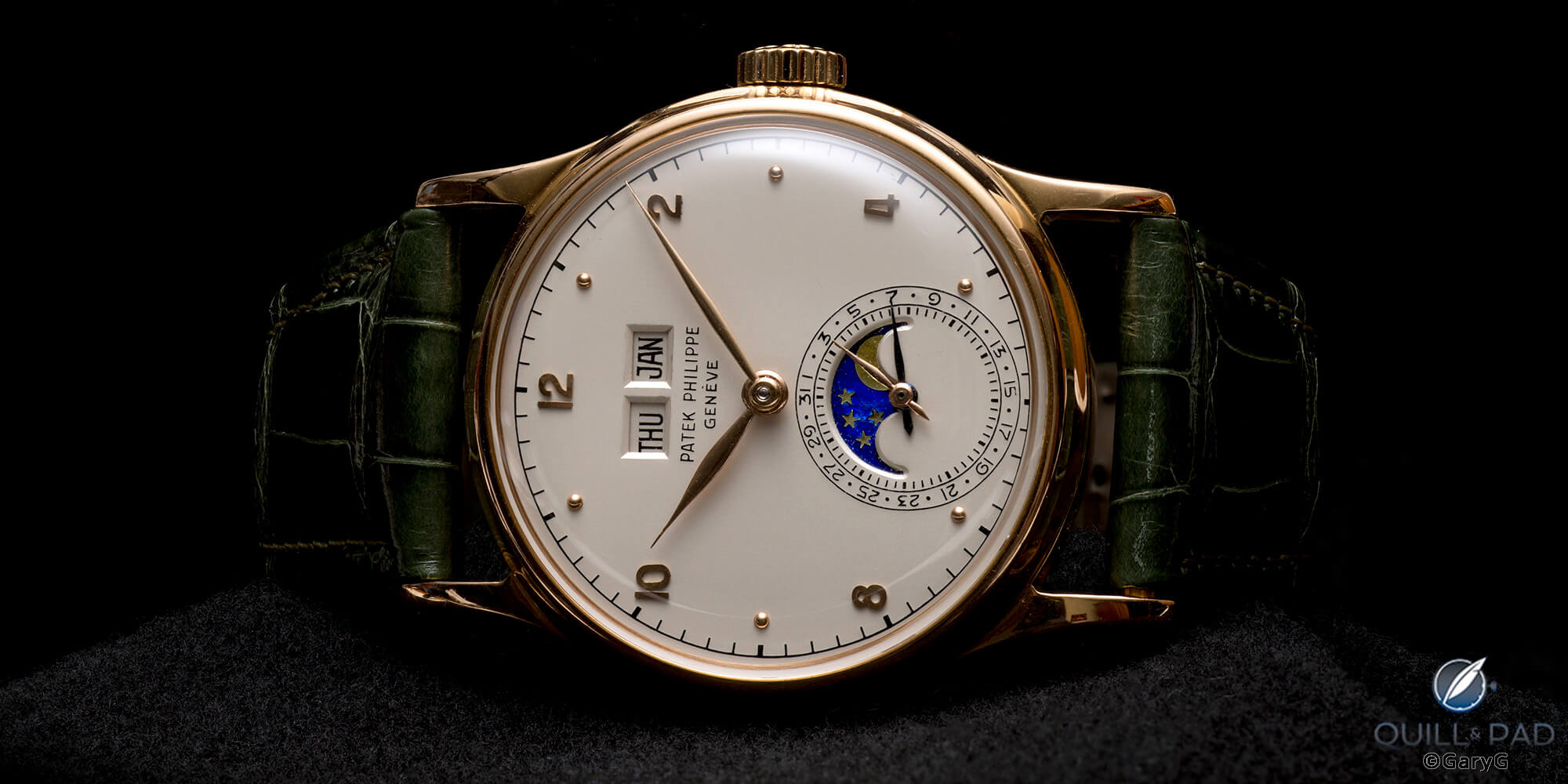
Enduring horological value: the author’s Patek Philippe Reference 1526 in pink gold
At least to my recollection, things in the “watch market” rumbled along pretty consistently for quite a while after that, with most watches depreciating steadily after purchase to a stable pre-owned trading value, in-person or online forum-based deals among friends to swap pieces, and upticks in overall prices moderated by the economic downturns of 2001 and 2008.
And while there were some watches whose prices arced upwards during those times, a detailed longitudinal analysis of prices of these references performed by William Rohr and presented in part at the Horological Society of New York showed that, with few exceptions, hot brands whose values went up between 2001 and 2015 not only could, but did, go back down.
Has there been a fundamental change?
Where has the current mania for “watches as investments” come from and can we expect it to run its cyclical course as in the past? Or are we in a fundamentally new world? I see several drivers of change.
Convergence of tastes: while it has been true for a long time that there have been “popular” and “grail” watches that draw more attention and find their way into more collections than others, it seems that the frenzy for certain must-have pieces has increased exponentially over the past five years. Watches like Rolex sport pieces and the Patek Philippe Nautilus and (especially) Aquanaut were there for the asking, but now that everyone “needs” to have one the prices have gone berserk.
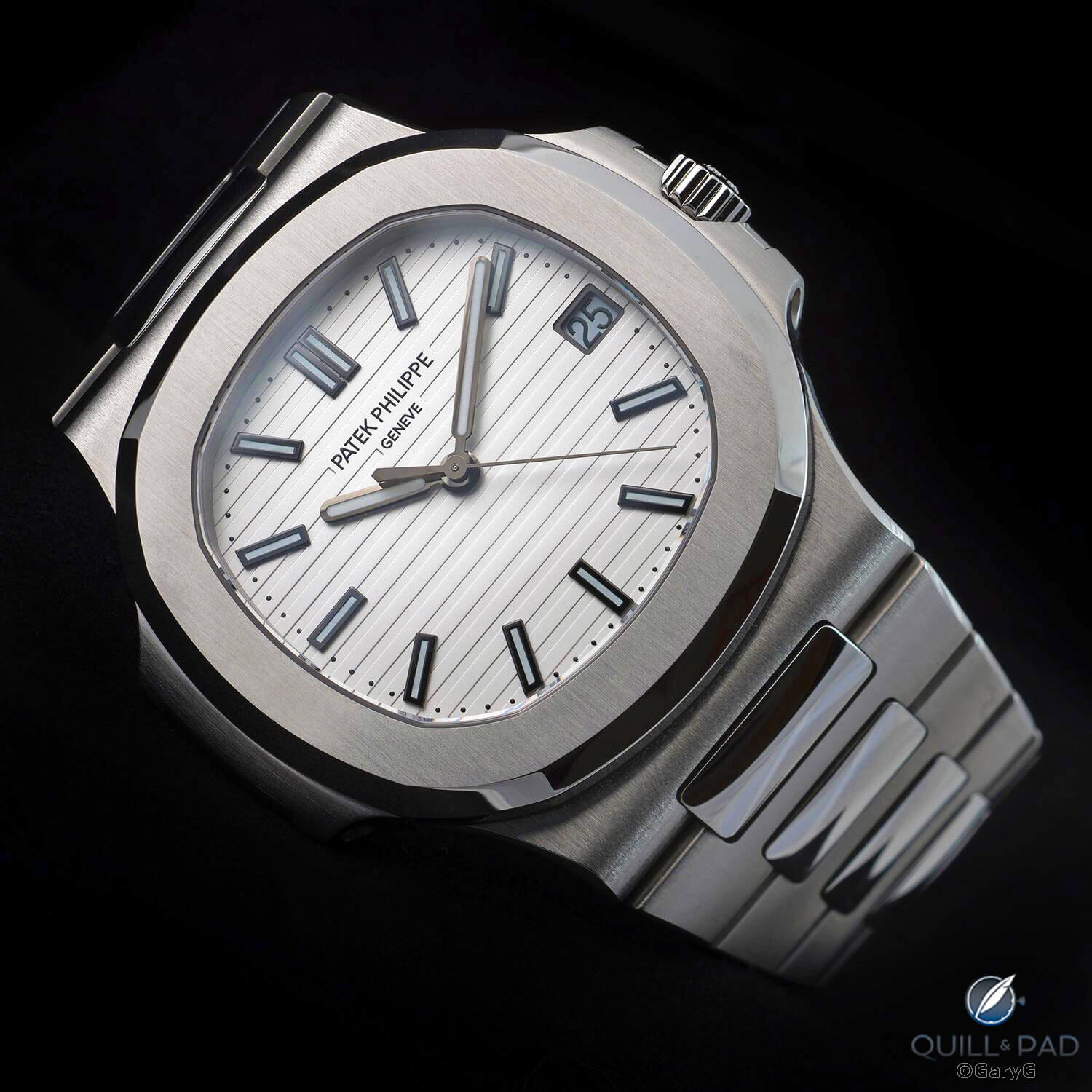
Readily available not that long ago: Patek Philippe Reference 5711A “piano key”
This is clearly driven by the Instagramming of Everything, in which the aperture through which many enthusiasts see the watch world is clogged with endless photos of the same few references.
I’d argue that it’s also the result of what is a good thing – the entry of lots of new would-be enthusiasts to the hobby – turned into a bad thing: a flood of low-information buyers who haven’t formed their own senses of what’s good and instead of asking “what do I like?” are asking both “what do other people seem to like?” or, too frequently, “what will go up in value?”
I was actually on a panel discussion recently during which a noted art dealer said that the most important advice he gives clients is, “Don’t buy what you love or you will likely go broke!”
I suppose that’s okay if you don’t have any emotional involvement at all with the items, but I can’t imagine that it makes for much fun – or even much learning about your own tastes and the features and virtues of different forms of art and craft.
The devil makes work for idle hands – and funds: I won’t opine yea or nay on the virtue of cutting taxes on high-income and high-wealth individuals, but especially as we got several months into pandemic-driven boredom and isolation and other avenues such as travel for spending discretionary cash dried up, we shouldn’t have been surprised to see the boom in prices at auction and the bidding up of resale prices for desirable independent pieces that we did.
What everyone knows: I say “everyone knows” facetiously: as the old saying goes, when the shoeshine boy is advising you on stocks you should think carefully about whether you are in a bubble. Over the past few years, however, the conventional wisdom seems to have been that what goes up goes up more – and that in a world of very low interest rates, even when stocks are performing very well tangible assets including art, cars, and gems – but now extending to watches – should be treated as investments subject to expected financial returns.
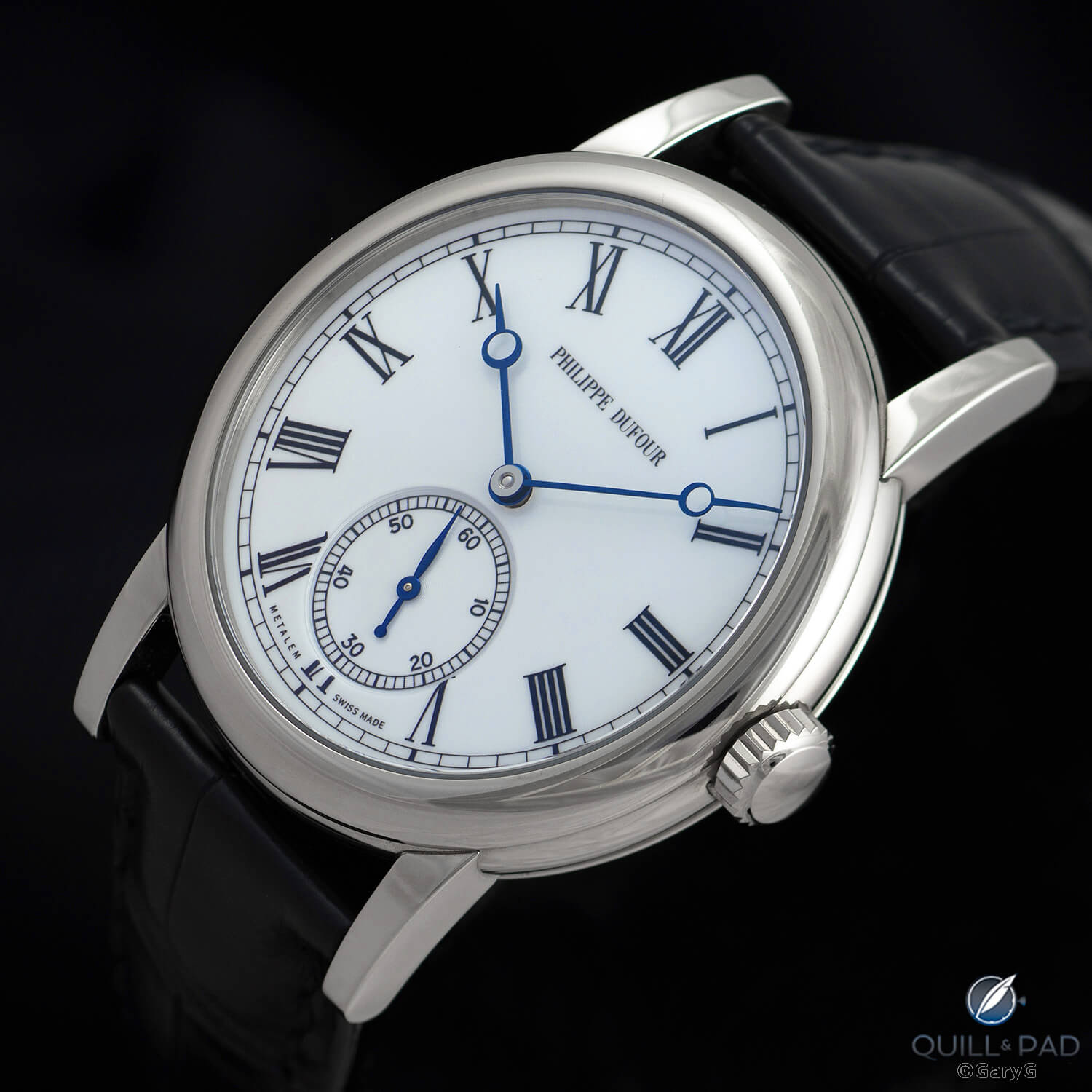
Timepiece or trust fund? Philippe Dufour Simplicity
I think that once watches are one of many asset classes to you, some of the joy has to go out of the pursuit. On a recent Clubhouse chat, one of the participants who promotes himself online as a watch fanatic said that he hadn’t been wearing any watches at all over the past few months and had been spending his time searching out and buying rare sports trading cards and event ticket stubs because “the returns are better.”
Nothing against card collectors, but it makes me sad thinking of someone in the Swiss countryside spending hours beveling the edge of a bridge when market attitudes are getting this cold.
Is the culture of speculation permanent or will it prove impossible to defy gravity as it has so many times in the past?
Flipping as a way of life: where there is scarcity, whether due to genuine production constraints or deliberate undersupply, flippers will emerge. I saw it very clearly in the market for Ferraris after Enzo’s death and continuing for many years thereafter. The watch world has been in the throes of this practice for a while now, despite the efforts of at least some brands to limit it.
Patek Philippe works fairly hard (but not entirely successfully) to identify and blacklist flippers, and most recently has announced that it will no longer issue extracts from the archives for watches from recent years.
I was baffled by the rationale behind this until I learned that there are grey market dealers who will sell “unworn” Patek Philippes without their unique certificates of origin (which tie the watch to the authorized dealer) but with an extract.
And small, up-and-coming brand Kurono not only tracks flipping to the best of its ability but is now launching blockchain authentication of the provenance of each of its future pieces, which may help.
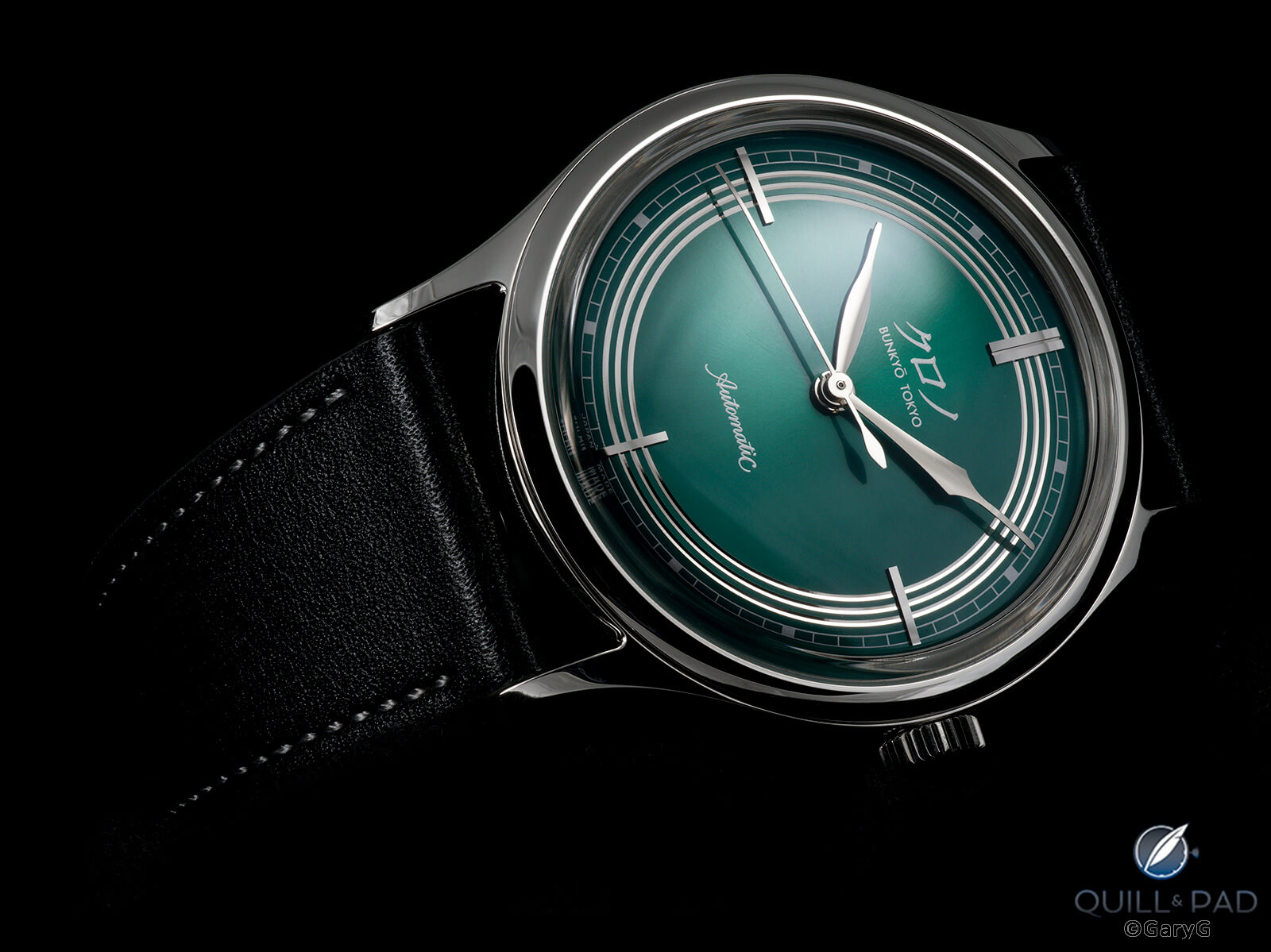
Fighting flippers (but still dropping limited editions): anniversary Mori from Kurono Tokyo
Still, from the volume of wailing out there it seems clear that the flippers are still ahead of the anti-flipping forces in this battle. I shouldn’t be surprised by this, but there are apparently authorized dealers who own their own grey dealer operations, basically selling their inventories of popular pieces out the back door to themselves and then immediately flipping them as unworn pre-owned watches at a substantial profit.
Brand initiatives: it’s great that more brands are building their skills at supporting the retail and aftermarket prices of their watches.
But perfectly reasonable business practices such as Patek Philippe’s discontinuation of Reference 5711 (stainless steel Nautilus), Audemars Piguet calling time on Reference 15202 (Royal Oak Jumbo Extra-Thin), and the steady stream of boutique-only limited editions (or in AP’s case, the recent introduction of pieces to be sold only through house-owned boutique outlets) only add fuel to the fire of those who would like to believe (or would like us to believe) that watches are investible assets and that access to certain watches guarantees profits.
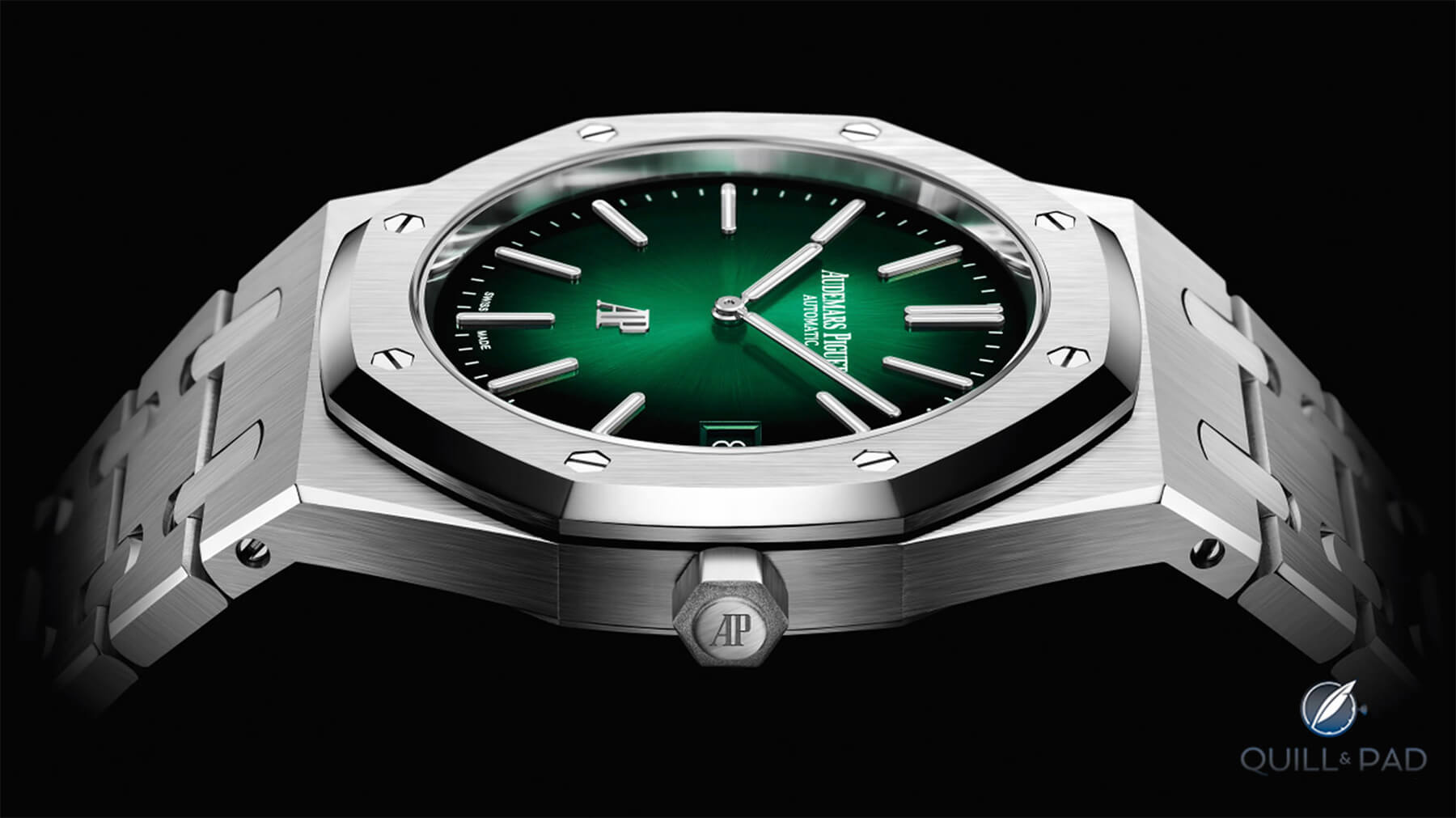
Audemars Piguet Reference 15202 in platinum with green dial, available exclusively through AP boutiques (photo courtesy Audemars Piguet)
The rise of market makers: finally, there’s the emergence of a set of secondary market dealers who not only sell watches, but actively influence the market prices of those watches. The model is as follows:
- Find a brand that makes solid watches, enjoys modest resale values relative to its objective quality, and (very importantly) has enough, but not too many, watches in circulation to allow for sufficient overall revenues but still within a thin trading market.
- Buy up a substantial inventory of those watches, especially from other dealers who are advertising the watches for sale below your target value.
- Actively promote the brand and its watches – it helps if there is already a core of avid brand supporters out there who will eagerly chime in.
- Slowly release the inventory of watches into the market at steadily increasing asking prices.
As with many trading businesses, the ability to hold physical inventory is key. You may remember a year or so ago when crude oil spot prices briefly dropped below zero; paper traders who couldn’t take delivery of the oil lost millions, while the folks with fleets of tankers and big tank farms enjoyed a big windfall.
My personal belief is that this sort of market management may be a lucrative short-term play but is ultimately not sustainable at some of the price levels we are seeing. Nevertheless, if you want to buy, own, or sell desirable watches today, it’s necessary to be aware of ways in which the market isn’t entirely open – and how, once everyone who wants one already owns one or two or three watches from Brand X and wants to sell some, pricing could rapidly deflate.

Price explosion: brass-movement Tourbillon Souverain by F.P. Journe
Why it’s less fun now
Of course, if I had the moral fiber and mental strength I could simply ignore all of this and focus only on the watches I love and the great folks who make, collect, and enjoy them.
I’ll admit though that I’m weak: my waking and sleeping hours are haunted by thoughts of watches I sold at too low a floor on the “money elevator” before their values skyrocketed or chose not to buy because they didn’t suit me despite their potential value – or whether the time is now right to sell certain pieces whose values have gone up despite my love for them.
A particularly notable example of the former was turning down a Patek Philippe Reference 5976G Anniversary Nautilus at retail because it was just too massive for my wrist, which from a watch perspective was absolutely the right choice, but if you’re keeping score at home has cost me, oh, let’s say about $300,000 against today’s resale prices.

Oops: Patek Philippe Reference 5976G on the author’s wrist, November 2016
I’m fully aware that’s a whiny, greed-headed, one-percenter “problem,” although I could have lived for quite a while on that kind of dough as I’ve edged into retirement – but for me the more important bit of all of this is that ours is a social hobby.
It’s a rarity to be invited to someone’s home to look at their art collection, and if it’s a really good artwork it’s probably in a climate-controlled warehouse anyway.
Gem collectors, I am told, are similarly reticent about getting together and sharing their baubles.
The watch community by contrast is an affable lot. There are entire organizations around the world dedicated to getting people together to talk watches and share them, and I know that as soon as public health constraints allow there will be a flood of gatherings where we catch up, swap tales, and speculate on the future.
I just wish that money wasn’t going to be a prime topic of discussion.
You may also enjoy:
Living Beyond Your Means As A Collector: How To Avoid Getting Hurt
Why The Patek Philippe Nautilus Is King: A Collector Weighs In
Stainless Steel Patek Philippe Nautilus Market Madness: Thoughts On The Current Market Situation
From Zeros To Heroes: The Patek Philippe Nautilus 5711/1P And 5976/1G Anniversary Watches
Leave a Reply
Want to join the discussion?Feel free to contribute!



Dear Gary Getz, thank you for the moral of the story: Meet and talk about watches and clocks and the beauty of it. Any conversation about numbers and prices only involves a set of ten different digits, from which an infinite number of numbers can be composed. Conversations of this kind could just as easily take place in the society of the friends of the circle number ‘Pi’, a funny community, but a but creepy. Greetings, Thomas
Dear Thomas,
All too true! For me watches over digits any time, as well…
Best, Gary
It’s disappointing, and while there are some exceptions, for example some of the smaller independents, as a whole the watch industry is corrupt. And this includes the collusion of badly behaving ADs, as pointed out in your article.
What started out as, and kept me involved with, a fascination of the intricacies and craftsmanship of mechanical watches, has devolved quite a lot into something else. And the sad thing is I don’t see it changing for the better anytime soon, if at all. In trying to have an understandable conversation about this very topic, I’ve run into where I’ve been accused of being anti-capitalistic, or a communist, even a hater of a certain southern university football team. Go figure.
Ron — sorry to hear that you’ve had those unpleasant conversations — as you can imagine I’ve had a few of those myself, although so far I have avoided being labeled as a hater of any particular college team!
May things at least migrate back toward some balance that properly recognizes the beauty and craft of these great works sometime soon.
Best, Gary
Great article. I bought my GMT Master for nothin after the GFC. I’m happy it’s worth 5x more now, but I bought it because I loved it. Still do and I’m not selling! My latest purchase was the conservative “growth potential” watch instead of the “love it” choice. Still regret it. It may go up but it’s just not a watch I love wearing. It’s just another dusty investment.
Thanks, Brandon. Sorry you are regretting your latest purchase but I very much understand the temptation. Outstanding turn of phrase, by the way: I’ve already slipped the term “another dusty investment” into a few conversations.
Best, Gary
Dear Gary,
another clear analysis concerning the heated market situation.
It is right, you got to have a stable resale market to get realistic and fair prices at last for the pieces you want to get rid of. On the other side of the medal it is less fun when you to often struggle getting an interesting time-piece into your hands at the usual points of sale. Consequently I dislike it to go to the grey market dealer to get a watch which is so rare to see it in the metal at the concessionaire although it is a hyped mass product like a Rolex 126710BLRO. When I did two years ago at last it was a personal dislike and I refused the deal. The opposite experience has been with a PP 5470/1G-001, never having a Nautilus in my hands before and refusing Nautili by preconception. At last it was love at first glance, but I didn´t come into play cause of the overexcited pricing.
What I like to point out is that for me living at the country side and beeing not a non plus ultra high end collector traveling round the world it is very often problematic to get interesting watches in real life into my hands at the regular sale points (and at the recommended retail price) because of backdoor batch selling concessionaires and customers who are essentially resellers connected to the grey-market.
At last collecting has to be a heart decison and sometimes it is linked with modelswapping (and reselling) for several decisions, maybe to focus or just to reduce the amount of pieces; hence reselling watches is not the core problem instead of speculation and driven markets leading to model shortage for the real collectors and exploding grey-market prices.
When buying a timepiece the possible reselling price can not be the decisive argument for a real collector, but the called purchasing price has to have a realistic value!
On the long run it has to be the interest of the makers of the so called „grails“ to drain the grey market and stay credible and reliable to their „real“ customers. On the other hand as a collector I am not forced to go like the lemmings over the cliff and focus toward topics opposite and away from what you called „convergence of tastes“. Open-minded consequence: buy the watches you really like and not these third partys are telling you.
Many thanks for these well considered thoughts, Jost! I completely agree with you that being able to buy and sell watches at some reasonable prices (and not heavily manipulated for short term profit by various parties) is very important to a hobby in which we change the watches in our collections, modify our tastes, and in the absence of infinite funds need to sell so that we can buy.
I hope that the 5470 makes its way to you at some point!
All the best, Gary
Watches and worth? Not me.
Succinctly put!
Good article, Gary. To my recollection (going back 25+ years) watches always have been commercial objects —after all, they cost money—but not like today. I recall 15 years ago some Singapore collectors lamenting price escalation, and there always have Rolex guys who’ve “justified” their purchases based on resale value. But today it’s crazy, and not an arena in which I want to play. There has to be art-for-arts-sake.
Thanks, Michael, and as you’d expect I’m completely on board with your art-for-arts-sake perspective. And as you also say, with expensive items like these there’s always a need to pay some attention to what they cost — but today’s speculative environment is something else.
Best, Gary
I’m curious about which watches are worn. Especially those over $100K. I imagine that they live only in safes, which seems to be a waste of a watch to me. Perhaps some other commenters will shed light on which are worn and which are never worn.
Alan, as you’ve probably seen here Gary wears everything. But what each person does with their collection is really personal. So that’s hard to say.
Refreshing to read among the (many) blog sites centered around promoting this very topic. The unending FOMO that instragram fomented in my daily life became untenable, and I’m happy to say I’ve been off for nearly two years. Watches drew me in as a 1st yr analyst grinding at a desk, however the ugly turn in recent years has soured something I care so deeply about. I hope some balance can be found, and maybe collecting will return to its roots where one can walk into a showroom and see more than empty showcases and glib responses from salespeople.
Thanks for chiming in, Colton! I’m also hoping that we’re going through a transitory time here and that we’ll get back to our roots sooner rather than later — fingers crossed!
All the best,
Gary
You don’t see this as the business model going forward? If not, why not ?
Thank you Gary – I feel compelled to let you know that I read all the watch websites I can find every day and this has been the best article I’ve read in the last few years. Cracking stuff.
Well, you have certainly made my day, Paul! Many thanks indeed for the kind words — I have to give a tip of the hat to Elizabeth and Ian for encouraging me to speak openly about my views here on Q&P, and I’m very pleased that the article resonated with you.
Best, Gary
It all does my head in, and IG is not helpful at all.
It is (equal parts?) so very wearisome.and so very aggravating.
‘Asset class’ – that’s the crux of a lot of it, isn’t it? If they are seen in this vein.
Agreed on every point, Y. Nice to see you here!
Agree with you (and Elizabeth) 100 percent. Thanks for chiming in!
Best, Gary
I believe the problem comes from both sides; corporate and consumer.
As societies become increasingly unequal, fewer ordinary working people can aspire to ownership of higher-end pieces, meaning that the increasingly psychotic “Fratboy Class”
1) Has the market to itself
2) Has more money
3) Had had to do less for the money
4) Is increasingly crass & materialistic.
When people can become multi-millionaires for inventing the “like” button, you know we’re in trouble.
Authorised Dealers are salesmen. Let’s be in no doubt, whether its doughnuts or diamonds, pushing product is all that counts. We have all scrolled past pages of Rolexes-for-thugs on Chrono24. This is not a new phenomenon.
Watch Industry CFOs and shareholders do not care at all about the opinions of watch connoisseurs or indeed anyone as long as the dividend is increasing. “The Market”, it seems, is unshockable at this point. So we end up with the new Audemars Piguet Black Panther watch: A sure sign The End of Days is upon us.
Nice watch